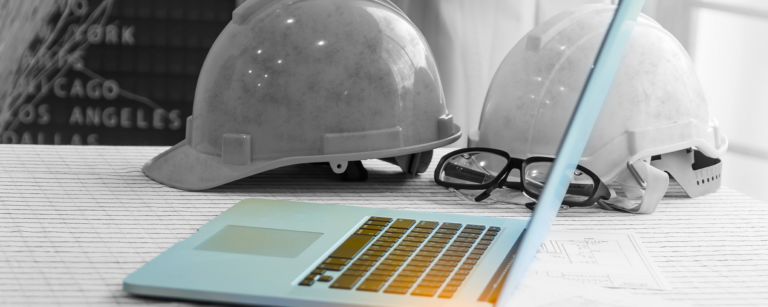How AI-Driven Planning and Scheduling Can Benefit Construction Estimating
March 22, 2022
Artificial intelligence (AI), also referred to as augmented intelligence, holds so much promise for the ways it can be applied within construction projects. Already known for its role in drone and robotic technology, it’s beginning to appear in other project-critical functions such as project scheduling, planning and risk management. It is through this AI-driven scheduling technology that another area can benefit; estimating.
By making use of the huge amounts of historical data stored in today’s more advanced planning and scheduling solutions, AI can help team members better understand current and past projects to enable better decisions, which leads to better project outcomes. Such historical data can then prove highly valuable in creating new estimates where so much of the project costs revolve around scheduling and planning.
Let’s look at some of the ways today’s construction scheduling and planning can inform more accurate estimates.
Repurposes historical project data for creating new construction estimates
Estimates are only as accurate as the information that goes into them. And accuracy becomes all the more crucial when dealing with millions of dollars and countless labor, material and equipment resources. The data housed in an AI-powered scheduling and planning repository can serve as a primary information source, delivering the kind of precision that an accurate estimate relies upon. AI uses the constantly growing database to learn and make suggestions for the most optimized schedules and plans, including for risk-adjusted contingencies. The impact on project costs becomes part of that overall database, producing a gold mine of information to tap into for creating more realistic estimates.
The key is starting with a project whose scope of work closely matches the one being estimated. Leveraging its risk-adjusted, reality-based data, it can show:
- How close actual costs were with the original estimates, and how schedule performance (SPI) and cost performance (CPI) metrics working in tandem may provide clues as to how far off actuals were from the originals
- How change orders impacted the schedule and therefore also costs, particularly for extra time and materials
- How schedule delays affected costs
- Risks that occurred, both anticipated and unforeseen, that the AI may suggest considering for the new project
- How well any pre-planned or last-minute contingency plans mitigated the financial impact, which can inform whether similar plans would have to be adjusted when preparing the estimate
Overcomes the influences of common project beliefs on construction estimates
Artificial intelligence will never take the place of human intelligence, thus the alternative term of augmented. But what about human nature and beliefs? One thing AI can do is help prevent the adverse effects of normal human motivation that can come into play as estimates are being developed.
Optimism bias is one such human phenomenon. This bias emphasizes an odds-are-in-our-favor mindset, while discounting the potential for schedule- and cost-impacting risks. Of course, it’s natural to feel confident and optimistic about a project. But when it distorts decision-making and impedes proper planning, that’s when it becomes optimism bias or overconfidence. So a construction company that has had past success on similar projects may assume these successes will be replicated on future ones. Or it may believe it has effective strategies in place already to prevent major risks from derailing the project, or to at least mitigate any severe effects. Unfortunately, this can unintentionally manifest as a marked difference between the initial expectation and the resulting outcome — in other words, an overly optimistic construction estimate that is far off the mark compared to the final, actual project costs.
Another motivating influence is strategic misrepresentation. Where optimism bias would be considered an internal belief, strategic misrepresentation is more externally driven. The latter includes incentivizing or coercing to intentionally play up shorter timelines and understate risks and costs to make an estimate appear more palatable. The result is cost overruns that far exceed the estimate and that later may be “accounted for” with excessive change orders to make up the anticipated difference.
It can even be something as innocuous as creating an estimate using the past experience and expertise of current team members that isn’t backed by hard numbers. Again, the resulting project cost overrun is predictable.
The way to counter these phenomena? Unbiased, comprehensive data that can be found in AI-powered scheduling and planning. With this data repository to draw from, construction companies gain confidence in the precision of the already risk-adjusted data when assembling precise estimates based on optimism rather than optimism bias. And as project owner expectations shift toward bids and estimates that are based on reality rather than the lowest dollar figure, AI-enabled data neutralizes the temptation to use strategic misrepresentation. Further, that data has been fine-tuned with continual human input, turning those guesstimates into accurate estimates that consider the valuable experience of past project teams.
Let artificial intelligence help inform your construction estimates
With InEight scheduling and planning capabilities, you can leverage the historical data your large, capital projects require. In combination with your own project data, you’ll be able to produce estimates with a higher degree of certainty, yielding better project transparency during the project life cycle. See how they can work for your company by scheduling a demo.




